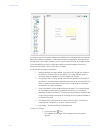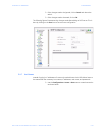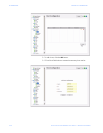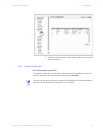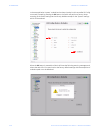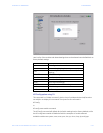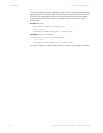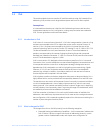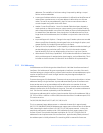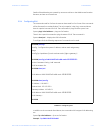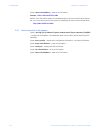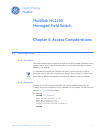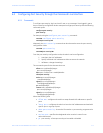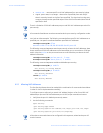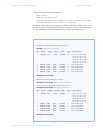5–32 MULTILINK ML1200 MANAGED FIELD SWITCH – INSTRUCTION MANUAL
IP ADDRESSING CHAPTER 5: IP ADDRESSING
addresses. The scalability of multicast routing is improved by adding a "scope"
field to multicast addresses.
• A new type of address called an "anycast address" is defined, that identifies sets of
nodes where a packet sent to an anycast address is delivered to one of these
nodes. The use of anycast addresses in the IPv6 source route allows nodes to
control the path along which their traffic flows.
• Header Format Simplification - Some IPv4 header fields have been dropped or
made optional, to reduce the common-case processing cost of packet handling
and to keep the bandwidth cost of the IPv6 header as low as possible despite the
increased size of the addresses. Even though the IPv6 addresses are four times
longer than the IPv4 addresses, the IPv6 header is only twice the size of the IPv4
header.
• Improved Support for Options - Changes in the way IP header options are encoded
allow more efficient forwarding, less stringent limits on the length of options, and
greater flexibility for introducing new options in the future.
• Quality-of-Service Capabilities - A new capability is added to enable the labeling of
packets belonging to particular traffic "flows" for which the sender requests
special handling, such as non-default quality of service or "real- time" service.
• Authentication and Privacy Capabilities - IPv6 includes the definition of extensions
which provide support for authentication, data integrity, and confidentiality. This is
included as a basic element of IPv6 and will be included in all implementations.
5.5.3 IPv6 Addressing
IPv6 addresses are 128-bits long and are identifiers for individual interfaces and sets of
interfaces. IPv6 addresses of all types are assigned to interfaces, not nodes. Since each
interface belongs to a single node, any of that node's interface’s unicast addresses may be
used as an identifier for the node. A single interface may be assigned multiple IPv6
addresses of any type.
There are three types of IPv6 addresses. These are unicast, anycast, and multicast. Unicast
addresses identify a single interface. Anycast addresses identify a set of interfaces such
that a packet sent to an anycast address will be delivered to one member of the set.
Multicast addresses identify a group of interfaces, such that a packet sent to a multicast
address is delivered to all the interfaces in the group. There are no broadcast addresses in
IPv6. This function has been replaced by multicast addresses.
IPv6 supports addresses which are four times the number of bits as IPv4 addresses (128 vs.
32). This is 4 Billion x 4 Billion x 4 Billion (296) times the size of the IPv4 address space (232).
This works out to be:
340,282,366,920,938,463,463,374,607,431,768,211,456
This is an extremely large address space. In a theoretical sense this is approximately
665,570,793,348,866,943,898,599 addresses per square meter of the surface of the planet
Earth (assuming the earth surface is 511,263,971,197,990 square meters). In the most
pessimistic estimate this would provide 1,564 addresses for each square meter of the
surface of Earth. The optimistic estimate would allow for 3,911,873,538,269,506,102
addresses for each square meter of the surface Earth. Approximately fifteen percent of
the address space is initially allocated. The remaining 85% is reserved for future use.



